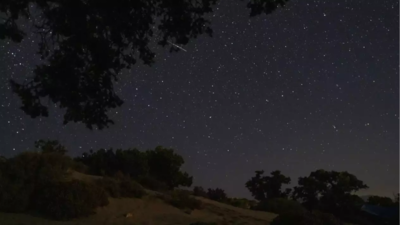The Orionids meteor showercelestial event associated with Halley’s cometwill peak this year from Sunday evening to Monday morning. Sky watchers can expect to see 10 to 20 meteors per hour during this peak time, with the best viewing occurring after midnight, according to American Meteor Society.
The meteors originate from the debris trail of Halley’s Comet, which is currently at the farthest point in its orbit from the sun since December 2023. These debris particles burn up as they enter Earth’s atmosphere, creating the meteors seen in the sky.
Robert Lunsford, coordinator of fireball reports for the American Meteor Society, explained, as quoted by CNN, “The Orionids have kind of a flat top — a plateau of activity. So if it’s cloudy on that peak night, the night after that should be very close to the same activity you would have seen before.”
The Orionids will be visible in all parts of the world except Antarctica, where the sun does not currently set. They remain active until November 22.
As October progresses, the waning hunter moon will improve meteor sighting. Lunsford advised, “Try to observe meteors in the opposite direction from the moon to avoid reflected light that can prevent faint particles from being seen.”
Halley’s Comet’s debris trail hits Earth twice a year, with the first appearance in May causing the Eta Aquariids and the second in October giving rise to the Orionids. Larger particles from these trails can generate bright fireballsaccording to NASA.
For optimal viewing, NASA recommends sitting outside up to 30 minutes beforehand to allow your eyes to adjust to the darkness. Viewing at a higher altitude can also improve visibility as there will be less moonlight scattering.
The next significant one celestial events include comet C/2023 A3 Tsuchinshan-ATLASvisible until early November, and the two remaining full moons for 2024 — the Beaver Moon on November 15 and the Cold Moon on December 15.
Further meteor shower activity is expected to finish the year, with key dates including Southern Taurides on November 4-5, the Northern Taurids on November 11-12, the Leonids on November 17-18, the Geminids on December 13-14 and the Ursids on December 21-22.
